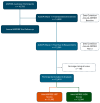Mediterranean Diet and Ultra-Processed Food Intake in Older Australian Adults-Associations with Frailty and Cardiometabolic Conditions
- PMID: 39275293
- PMCID: PMC11397489
- DOI: 10.3390/nu16172978
Mediterranean Diet and Ultra-Processed Food Intake in Older Australian Adults-Associations with Frailty and Cardiometabolic Conditions
Abstract
Dietary patterns contribute to overall health and diseases of ageing but are understudied in older adults. As such, we first aimed to develop dietary indices to quantify Mediterranean Diet Score (MDS) utilisation and Ultra-processed Food (UPF) intake in a well-characterised cohort of relatively healthy community-dwelling older Australian adults. Second, we aimed to understand the relationship between these scores and the association of these scores with prevalent cardiometabolic disease and frailty. Our major findings are that in this population of older adults, (a) pre-frailty and frailty are associated with reduced MDS and increased UPF intake; (b) adherence to MDS eating patterns does not preclude relatively high intake of UPF (and vice versa); and (c) high utilisation of an MDS eating pattern does not prevent an increased risk of frailty with higher UPF intakes. As such, the Mediterranean Diet pattern should be encouraged in older adults to potentially reduce the risk of frailty, while the impact of UPF intake should be further explored given the convenience these foods provide to a population whose access to unprocessed food may be limited due to socioeconomic, health, and lifestyle factors.
Keywords: dietary patterns; epidemiology; frailty; healthy ageing; nutrition.
Conflict of interest statement
The authors declare no conflicts of interest.
Figures
References
-
- Bhattacharjee N.V., E Schumacher A., Aali A., Abate Y.H., Abbasgholizadeh R., Abbasian M., Abbasi-Kangevari M., Abbastabar H., ElHafeez S.A., Abd-Elsalam S., et al. GBD 2021 Fertility and Forecasting Collaborators. Global fertility in 204 countries and territories, 1950–2021, with forecasts to 2100: A comprehensive demographic analysis for the Global Burden of Disease Study 2021. Lancet. 2024;403:2057–2099. doi: 10.1016/S0140-6736(24)00550-6. - DOI - PMC - PubMed
MeSH terms
Grants and funding
LinkOut - more resources
Full Text Sources
Research Materials
Miscellaneous





